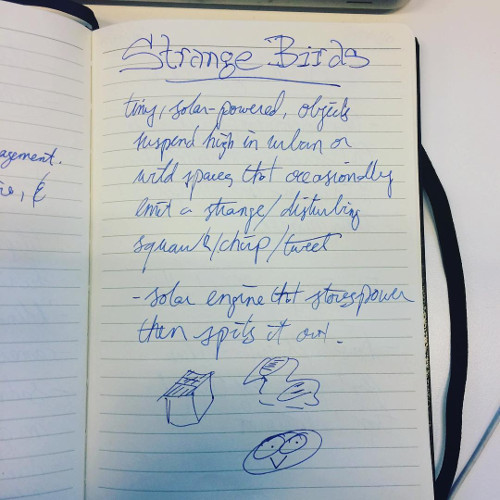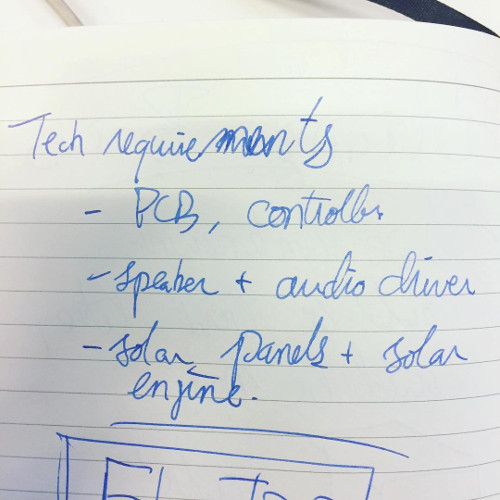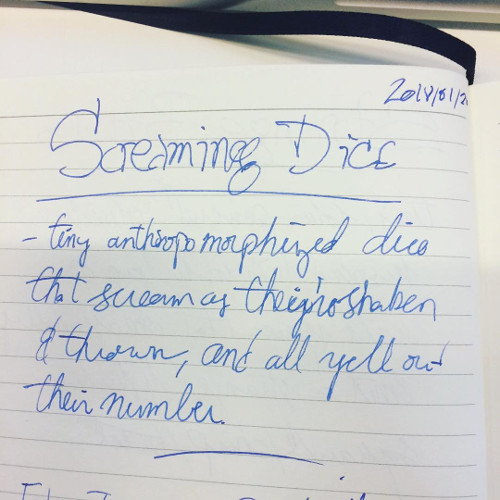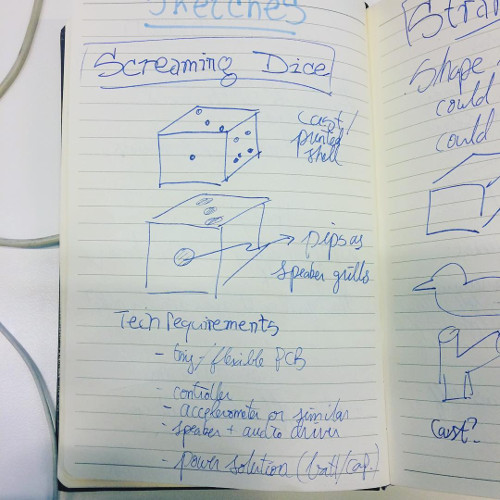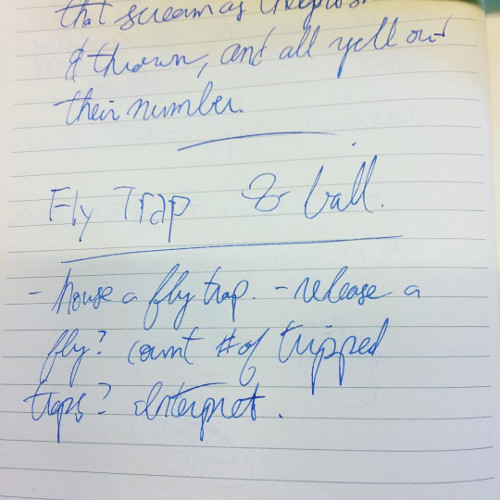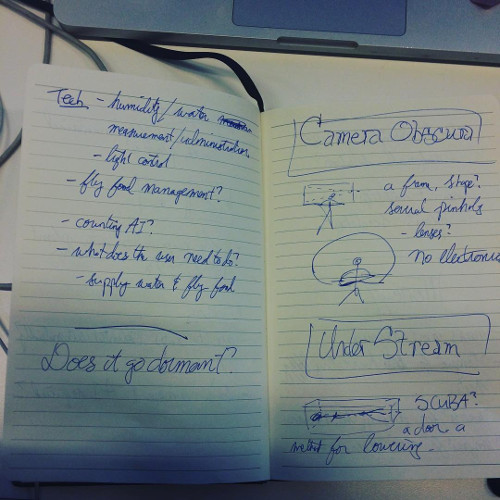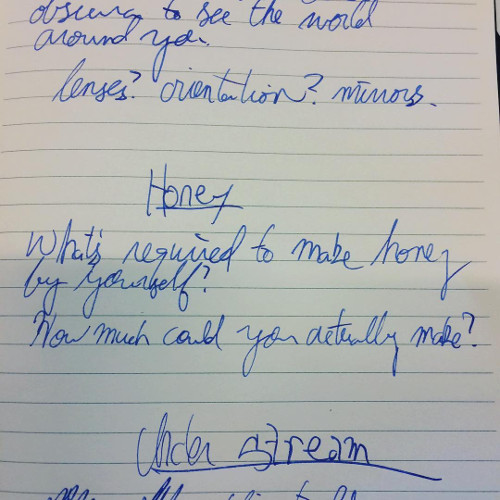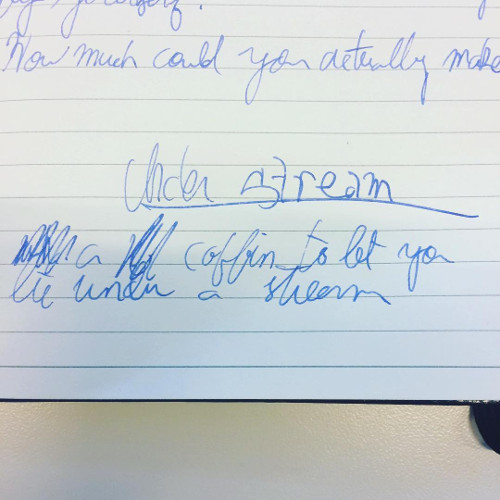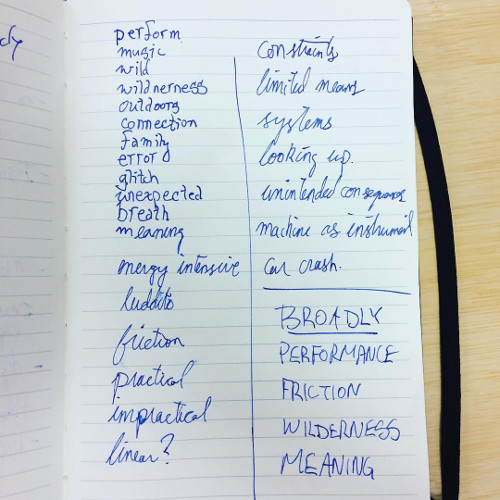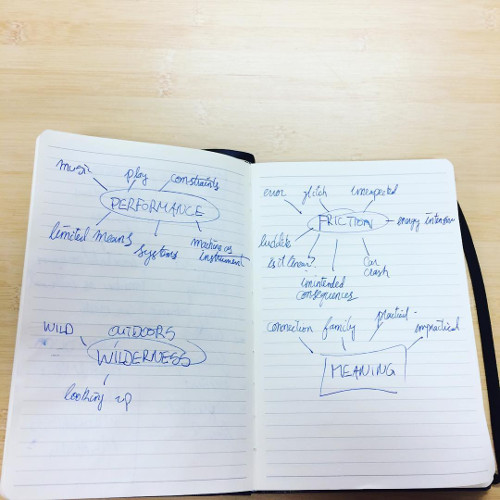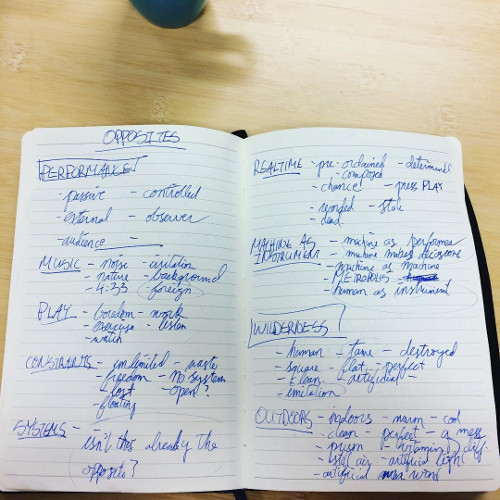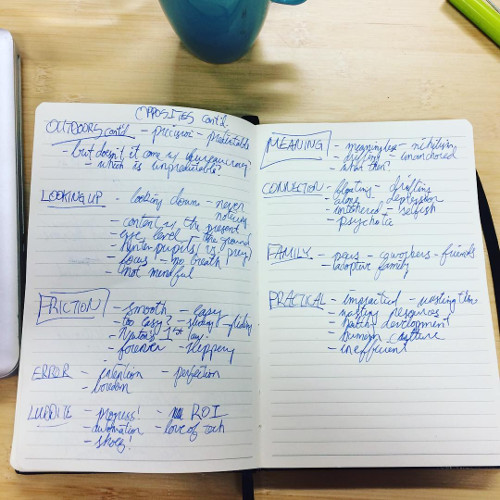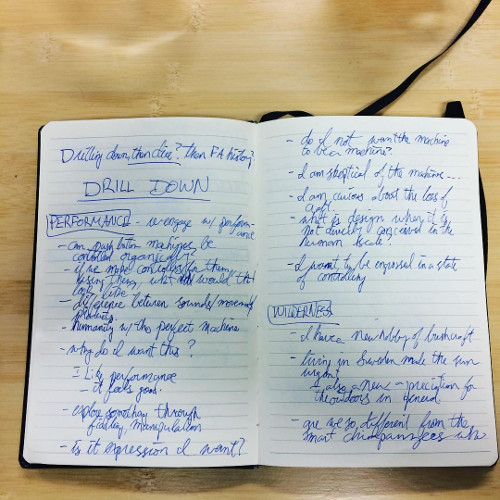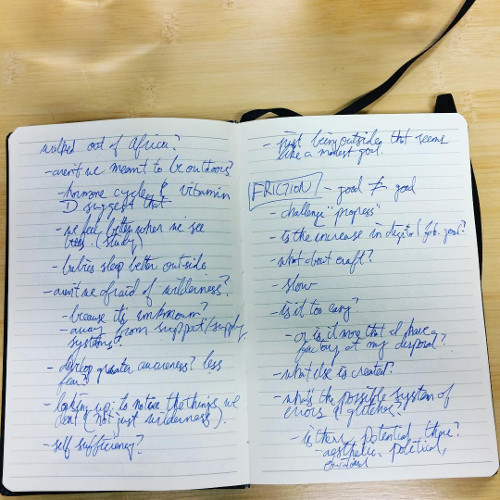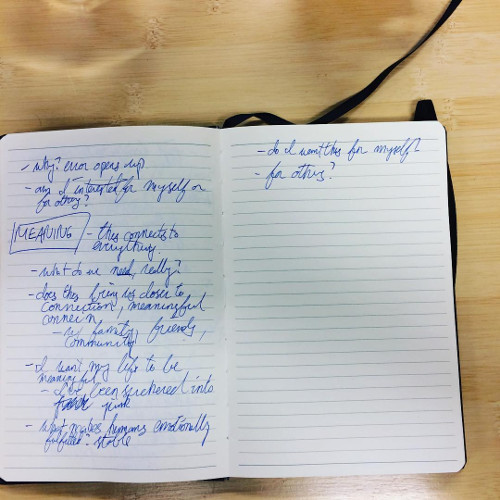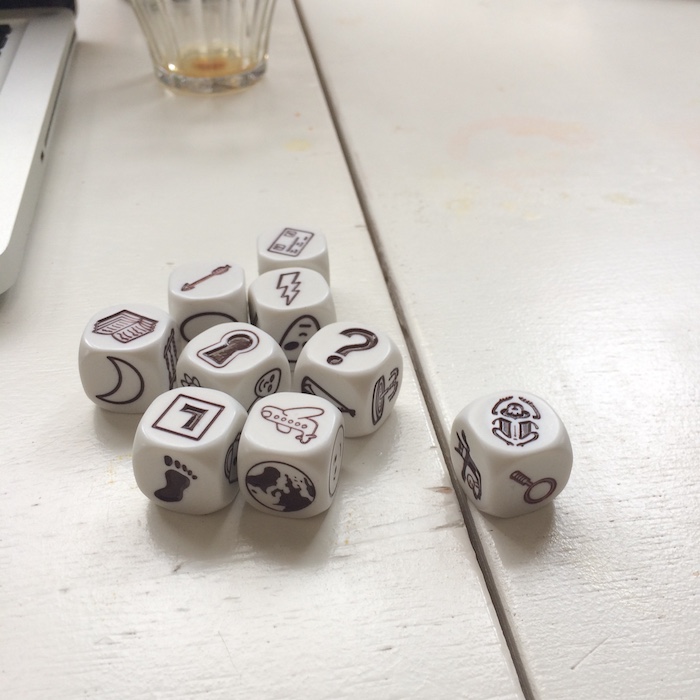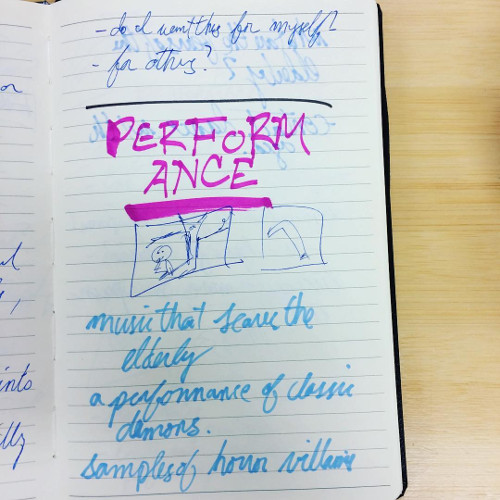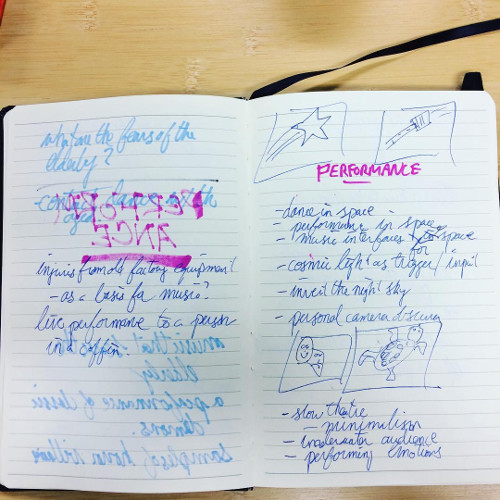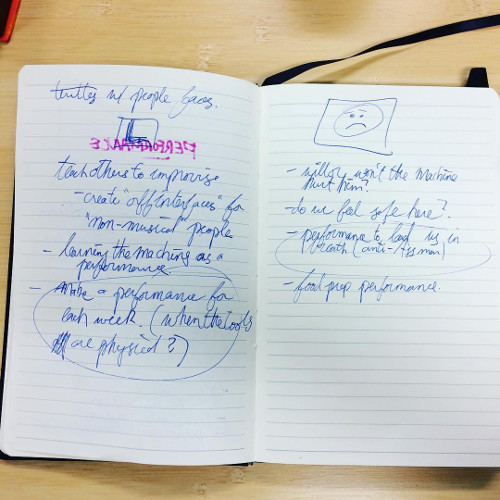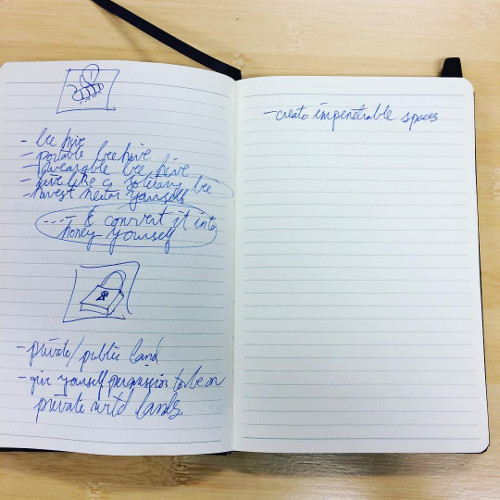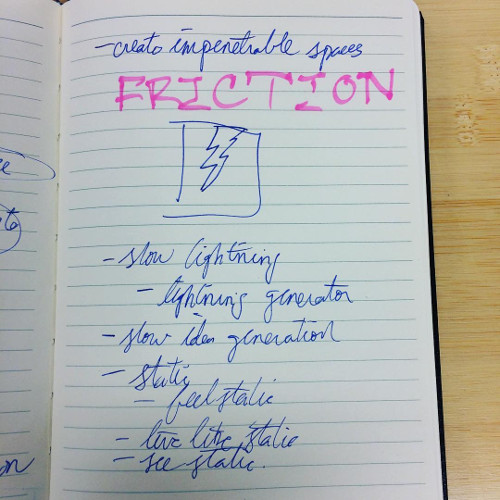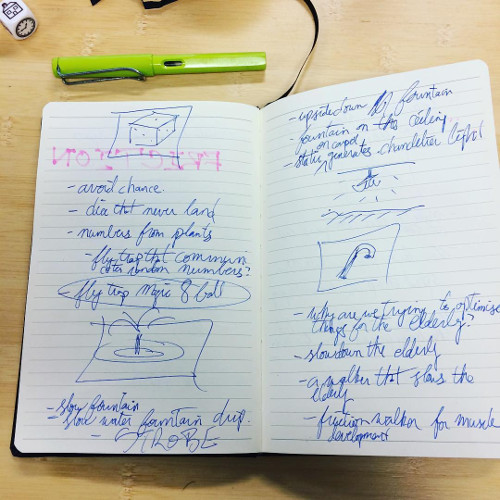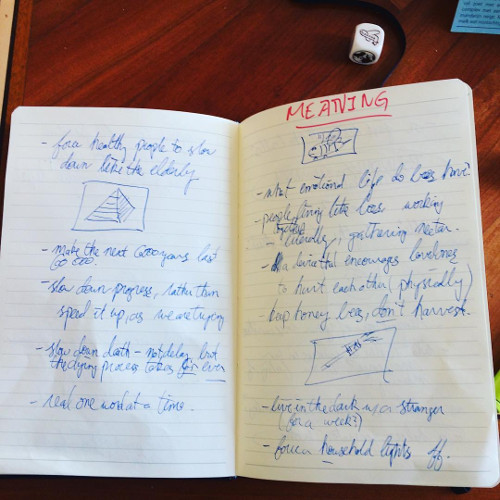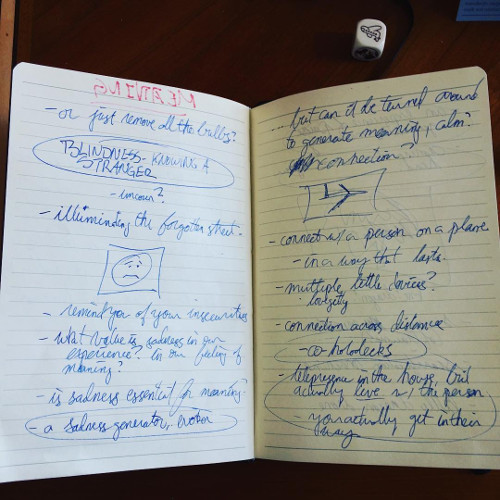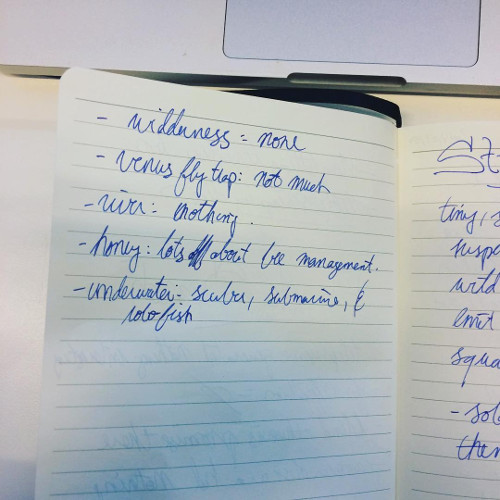Week 0: Principles and practices
The original proposal
This proposal is to use the digital fabrication machines, to create an interface (or interfaces), to control the machines live so that they can be performed like instruments.
The funding for my tuition came from an arts grant from the Canada Council for the Arts, and true to all grants applications I arrived with a fully-formed proposal about what would be accomplished here. The proposal was to explore performative opportunities in digital fabrication machines. Can the machines be performed like instruments? The machines are often presented as pushbutton solutions, but I am aware that there is a lot of translation between CAD designs and the final commands sent to the machine's motors. With my background in live electronic music performance, I was interested in the sound possibilities of the machines (CNC, 3D printing) and so had proposed to explore the ability to control the machines' movements live. The result would be some kind of physical control, created using the machines, to control the machines.
This would require the creation of a physical interface, using either casting, cutting or printing. The interface would depend on what can be controlled of the machines, but could be traditional sliders and knobs, or accelerometers, computer vision, photo resistors, IR proxmity sensors, etc. There are no sketches for this. This proposal requires learning how to use the machines before I can fully formulate a proposal for how the interfaces would work with a performer.
Ideation for more proposals
In the interest of fulfilling the assignment and presenting a complete proposal with sketches, I used ideation exercises to generate a list of possible final projects. This is ironic because I teach these exercises to industrial-design students, but rarely use them in my own work. But I know that, when learning new skills, I find it difficult to generate new ideas on the fly, so I wanted to complete this process before we jumped into everything. All notebook entries were documented in Instagram, for lack of another system to hand.
I'll present first the six proposals that I generated, in order of likeliness that I will do them. The ideation method is documented after. Most of the proposals are artworks or design provocations, as such users would be an art-going public or unaware passers-by.
Proposal 1: Strange Birds
Small objects suspended high in either natural or urban environments. They contain a solar engine and a speaker. When the engine has collected enough energy, the Strange Bird emits a very strange, not-quite birdlike squawk. I often find myself looking straight ahead or down, and am always amazed at the world above me. This objects are intended to get passers-by to look up. The solar engine needs testing to make sure that the timing of the squawks is not too rapid.
The form is uncertain. It could be natural-looking (a bird, a branch), or artificial, such as a plain cube. It would be cut or casted. The electronics require a solar engine, microcontroller, and audio driver and speaker.
Proposal 2: Screaming dice
Tiny anthorpomorised dice. They look like regular game dice, but act like little people. Each die mumbles when shaken in the hand, screams when thrown, and yells out its value when it lands. The user is uncertain, game players? Perhaps yahtzee and backgammon?
The pips could act as speaker grills. The form would be cut or casted, the guts require a tiny or folded PCB, a microcontroller, some kind of accelerometer, an audio driver and speaker, and a power solution.
Proposal 3: Flytrap 8-Ball
A strange random-number generator that counts the number of tripped traps on a venus flytrap plant to generate a random number.
I have a venus flytrap, and marvel at how many traps a fly can trigger before finally being caught. This is a terrarium with two chambers, one contains a venus fly trap, the second contains flies for its food. Each chamber is designed to fully support its contents. When a user desires a random number, a fly is released into the flytrap chamber. Once the fly is caught, the system counts the number of triggered traps.
The technology is far more involved. Requiring ways to calculate and regulate the water and humidity in both chambers (this has already been done by others), a way of feeding the flytrap when it's not active, a way of maintaining the fly population, a way of controlling passage from the fly chamber to the flytrap chamber, and a computer-vision system for counting the tripped traps.
Proposal 4: Shoulder-mounted Camera Obscura
I made a camera obscura in my studio many years ago at an arts residency in Banff, overlooking the rocky mountains. Camera obscuras are eerie, it's almost like video, but it feels more immediate. This project is a shoulder-mounted camera-obscura helmet that allows the wearer to perceive the world upside down and backways.
The form would be cut, most likely. It would involve lenses. But at the moment the proposal contains no electronics and so doesn't satisfy the final-project requirements.
Proposal 5: Honey made by a human
What would it require for an individual to make his or her own honey? Similar to Thomas Thwaites' GoatMan project, where he lived like a goat. This would require an apparatus to harvest nectar, replicate a bee's nectar stomach to introduce enzymes to break down the nectar, and a system for dehydrating the resulting nectar into honey. This idea is intended to be absurd, but also follows a research-through-practice premise, that something is learned when trying to accomplish the task.
I have no idea how to produce this. But it's not impossible, right?
Proposal 6: Understream
A transparent coffin intended to be placed at the bottom of a stream or river, allowing a person to spend time in that environment.
Again, the technology is a little uncertain here. It would require some kind of self-contained-underwater-breathing-apparatus, and a means of lowering and raising it into the stream.
Ideation Method
How I generated the project ideas.
Step one: write all keywords that come to mind, group them into themes
I have been considering my values lately. What do I value? How do I want my life and my art practice to progress? I wrote all keywords that came to mind, categorised them into themes, and then wrote them out with the keywords surrounding the themes.
Step two: write opposites
To better understand the words and the themes, I wrote words that I considered to be opposites of the keywords and themes.
Step three: drill down
To flesh the concepts out further, I wrote longform to try to clarify what I intended by all the words, and why they were important.
Step four: generate proposals
I played a game using Rory's Story Cubes, a tool for creating stories. There are nine dice, each face has an image. For each theme, I rolled one die, and then generated five proposals from the combinations. I did this five times for each of the four themes, generating around 100 possible project proposals. As I went, I circled ideas that I liked. The first exercise used two dice, but I quickly modified the exercise to use one die.
Search the Fab Academy archive for similar projects
I searched the Fab Academy archive for keywords related to the final project proposals that I liked. I made small notes about the results of the searches.
